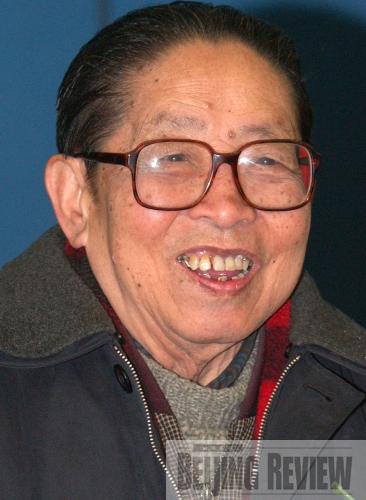|
 |
|
LOUD AND PROUD: This cartoon shows how scholars blow their own trumpets (XINHUA) |
If you mention Chinese cartoonists, one name always comes up. Ding Cong, who passed away on May 26 at the age of 93, will long be remembered by the nation for his wit and satire in a changing world.
 |
|
(CNSPHOTO) |
Ding began creating caricatures in the 1930s, establishing himself as a satirist adept at exposing social maladies of the time. His early works focused on the theme of resistance against Japanese aggression and fighting for democracy.
After the late 1970s, he contributed cartoons to the Beijing-based Reading magazine. Focusing on social phenomena of contemporary China, Ding's cartoons have been seen as a mirror of the social changes in China over the past 30 years.
He had illustrated the works of many famed Chinese writers such as Lu Xun (1881-1936), Mao Dun (1896-1989) and Lao She (1899-1966).
He also excelled at drawing figure portraits, which brought him many plaudits for his vivid presentation of the characteristics of people with very precise lines in an exaggerated, humorous style.
Ding kept drawing until 2007, when he was 91 years old. Most of his works have been published, including Selected Cartoon Works of Ding Cong and Illustrations of Lu Xun's Novels. Some of his publications have the captions published in German such as Ancient Interesting Scenes, and in English such as Current Interesting Scenes.
Ink in his veins
Born in 1916 in Shanghai, Ding was fascinated by painting and showed his talent as a young boy. But his father Ding Song, one of the forerunners of modern cartoons in China who specialized in drawing both political caricatures and cover girls, refused to let him choose painting as a career, saying that being a painter would not have a stable income.
Despite opposition from his father, Ding was still determined to enter the realm of cartoons. At that time, his parents could not afford books, so he would trek to the houses of his father's friends to read cartoon books. He also hung out at some old bookstores to read Western magazines about movies or fashion, which he later said had greatly broadened his vision.
From middle school, Ding began to draw cartoons for newspapers and magazines in Shanghai. The coexistence of a variety of cultures in the city provided fertile ground to his creations.
Ding always observed society and the world through critical eyes. He became used to observing everyone and everything around him and sketched them immediately. Hairdressing saloons, buses, classrooms, parks and zoos were all the places where he could find subjects to draw. Students in classes, passengers in buses or children with wondering eyes—all these could become the contents of his life sketches. Such practice in those days provided a solid basis for his future cartoon creations.
He was determined to show the differences between the rich and the poor and disclose the dark face of society through his work. Lampooning social problems and exposing how they were interwoven with politics was the basis for his creative process.
Chi Beiou, famous for pasquinades and also a long-term cooperator of Ding, told Xinhua after hearing the news of Ding's death that the thousands of pieces of Ding's works show how a cartoonist has a responsibility toward the people and society.
Nom de plume
Ding used the pen name, Xiao Ding, or Little Ding, from the age of 19. He explained that Ding in Chinese means people, so Little Ding implies the meaning of "just one of the people."
| 